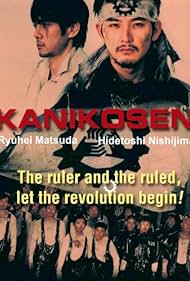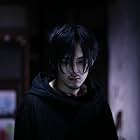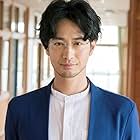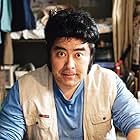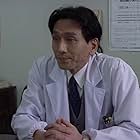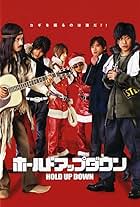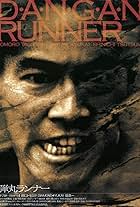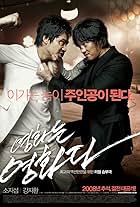(Japanese with English subtitles) Aboard the Japanese crab ship 'Kanikosen' equipped with a cannery facility, workers are forced to labor under pitiful conditions at minimum wages. Sick of b... Read all(Japanese with English subtitles) Aboard the Japanese crab ship 'Kanikosen' equipped with a cannery facility, workers are forced to labor under pitiful conditions at minimum wages. Sick of being ruled by their harsh Superintendent, one of the workers, Shinjo, urges his peers to r... Read all(Japanese with English subtitles) Aboard the Japanese crab ship 'Kanikosen' equipped with a cannery facility, workers are forced to labor under pitiful conditions at minimum wages. Sick of being ruled by their harsh Superintendent, one of the workers, Shinjo, urges his peers to rise up and start a revolution on board of the Kanikosen.
Photos
- Director
- Writers
- All cast & crew
- Production, box office & more at IMDbPro
Storyline
Did you know
- ConnectionsVersion of Kanikôsen (1953)
- SoundtracksFujin
Lyrics and Composed by Tasuya Mitsumura
Performed by NICO Touches the Walls
The original novel, by reports, is a doctrinaire dramatization of a workers' revolt. The ship-cannery is a hellish place. The workers are anonymous, often alcoholic and violent. They have families they want to bring back money to, but the pittance they receive goes to gambling or drink. Their life is a kind of slavery. They work near Russia, and when two escape, they get onto a Russian boat and find the workers, whose foreman treats them as equals, are happy. They decide that the idea of competing like ants to outdo Russia and serve the Japanese Emperor is nonsense and they bring back the communist message to their ship. The theme may sound like simplistic agitprop, but the book's lasting importance is signaled by the fact that it has been translated into English by the great Japanese scholar Donald Keene.
But in transforming the story to film Sabu (perhaps inspired partly by the colorful manga versions?) has produced something more tongue-in-cheek than the original, as Mark Schilling explains, making it "into a stagy, ironic postmodern statement that puts air quotes around its characters' righteous anger, while blithely tossing in anachronisms (such as present-day language, T-shirts and a battery-powered bullhorn)." This is true, though the anachronisms are less prominent than Schilling implies, and the ironies don't prevent the characters' plight from being touching--even as the drama ripples with comic moments. When initially the lower-depths workers attempt mass suicide by hanging, thinking they'll be reborn as whatever nice life they've thought of at the moment of death, and they merely fall on the floor choking in a heap, the tone of tragic-comedy is set. Some of the young actors are quite handsome and appealing.
Matthew Ward actually worked on a fish-processing ship off the Alaskan coast in his younger days and points out that in his experience, which he attests was hellish, the violence was all among the workers. In Kamikosen, it is done by the brutal foreman on the workers; and the captain of the ship is a wimp who does whatever the foreman wants.
The movie has an intricate set that in part evokes Charlie Chaplin's Modern Times with its giant wheels pushed by exhausted sweaty men, and a cave-like network of tubes in which the men sleep: that set may remind viewers of Akira Kurosawa's stark film of Maxim Gorky's The Lower Depths . The fishermen are always in long shiny mackinaws. The scene on board the Russian boat consists of a comical man explaining things in bad Japanese to the escapees, and joyous Cossack dancing in which they happily join.
On their return the revolt turns dark and brutal, and the film blends its tragi-comedy with elements of horror. It all goes on a little too long, and Kamikosen is a cultural phenomenon of more significance in its original Japanese context than in the larger world. Nonetheless for its mixed genre, its curious blend of appealing pathos and comedy, and its surprisingly strong leftist message, this film may not make it beyond the festival circuit, but is still a pretty good watch and a fairly unique experience.
Sabu (Hiroyuki Tanaka, according to IMDb) has already directed five or six films. The direction is competent, the staging ingenious, and the acting, especially by Ryuhei Matsuda as Shinju, the revolt leader,engaging.
An official ('Main Slate') selection of the New York Film Festival 2009.
The director So Yamamura filmed a version of 'Kanikosen' in 1953.
- Chris Knipp
- Sep 18, 2009
- Permalink
Details
- Runtime1 hour 49 minutes
- Color
- Sound mix
Contribute to this page

